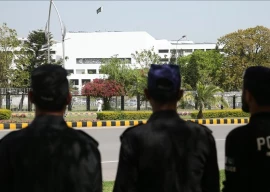
Pakistan launched on Thursday its second communication satellite Thursday, PAKSAT MM-1, to further improve the country's digital communication infrastructure.
The satellite was sent into orbit from China's Xichang Satellite Launch Center (XSLC) and will deploy at an altitude of 36,000 km above the Earth.
The five-ton satellite is equipped with the latest communication equipment. “The satellite is expected to contribute to the establishment of a sophisticated communication network and help meet the growing demands of the telecom sector,” Suparco said.
The satellite is expected to take three to four days to stabilise in its designated orbit around the Earth, a Suparco official added.
“Its advanced capabilities will address the increasing demand for high-speed internet and seamless connectivity. This high-power multi-mission satellite will provide communication services in C, Ku, Ka Bands and SBAS services in L Band.”
Read ICUBE-Q beams back first image from lunar orbithow much is in GuitarTuna Open Zara Jeff I might've zero hour Open WhatsApp
Prime Minister Shehbaz Sharif congratulated the nation on the successful launch of the country's second communication satellite.
"I, along with the entire nation, am proud of our scientists achievement," said the premier.
“It will prove to be a stepping stone in the transformation of the country into digital Pakistan. It will provide various communication services like broadband internet, TV broadcasting, mobile bank hauling, and VSAT connectivity,” added the spokesperson.
The launch follows the historic ICUBE-Q launch on May 3 on board China’s Chang’E6 mission.
ICube-Qamar achieved lunar orbit at 1:14 pm Pakistan time on May 9. Following its deployment on the moon, the satellite operated according to the designated parameters.
The Chang'e 6 mission is scheduled to commence its return journey to Earth on June 4 and is expected to reach the planet on June 25.
The quest to send a lunar orbiter started in 2022 when the China National Space Agency (CNSA), through the Asia Pacific Space Cooperation Organization (APSCO), offered member states an opportunity to send a student-built payload to Earth's closest celestial neighbour onboard the Chang'e 6 mission.























COMMENTS
Comments are moderated and generally will be posted if they are on-topic and not abusive.
For more information, please see our Comments FAQ